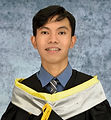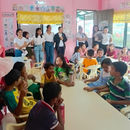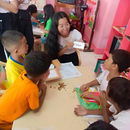
dao educational foundation
Happy 20th Anniversary 2005 - 2025
In partnership with Sangguniang Kabataan (SK), our scholars volunteered as teachers and conducted a summer tutorial for eager youngsters in Barangay Balucuan.








Eric is a teacher at Ateneo de Iloilo-Santa Maria Catholic School, a Jesuit institution providing primary and secondary level education.

Civil engineer John Charlie Escalada is a project manager for HSBC UPRIGHT Builders in Roxas City. Charlie oversees the company's schedules and construction sites.





Elme Salazar works as a senior instructor at Swimtravel PH, a learn-to-swim company in Manila. She is also a certified scuba diver. A mountaineering enthusiast, Elmz had climbed Mount Apo, the country's highest peak, as well as most of the boondocks in northern Luzon. She used to be a travel coordinator for Ohana Trekkers before the company was forced to close by the pandemic.

Zosimo Escarnuela III is employed in Manila by HSBC, a British banker and financial services corporation. Zee is Operations team leader for the Global Private Banking unit focused on Switzerland, Luxembourg & the Channel Islands. He previously worked for IBM and AXA Philippines.

Justin Abawan is a cadet (class of 2026) at the Philippine National Police Academy (PNPA) in Silang, Cavite. He is pursuing a degree in Public Safety leading to a career in law enforcement.











